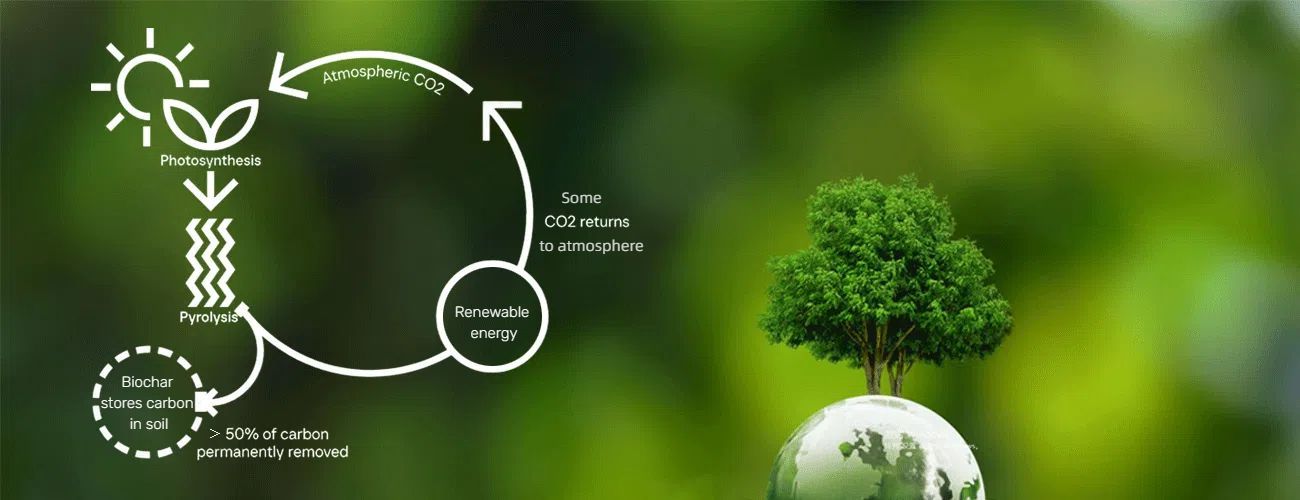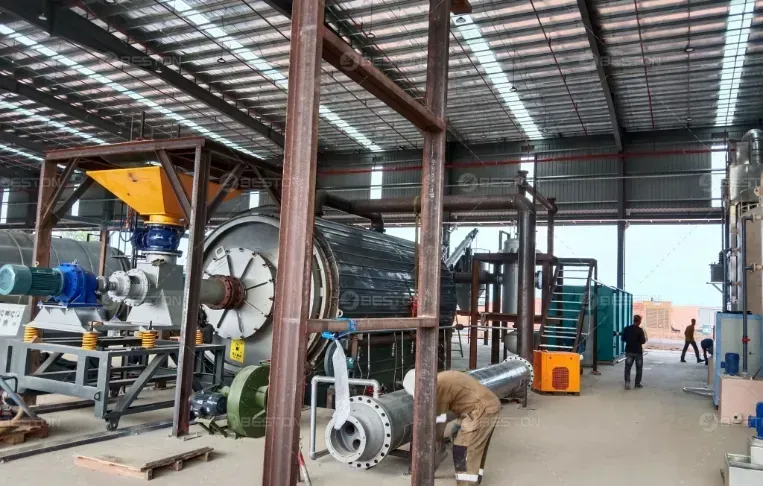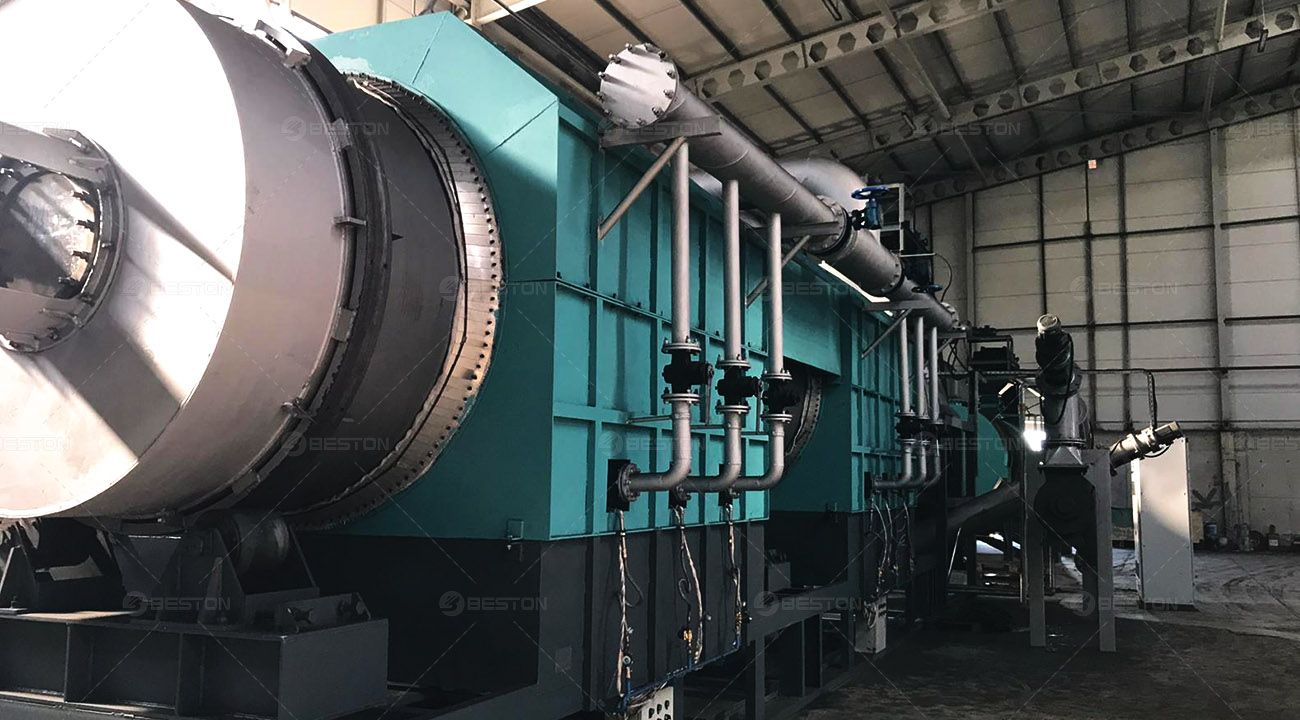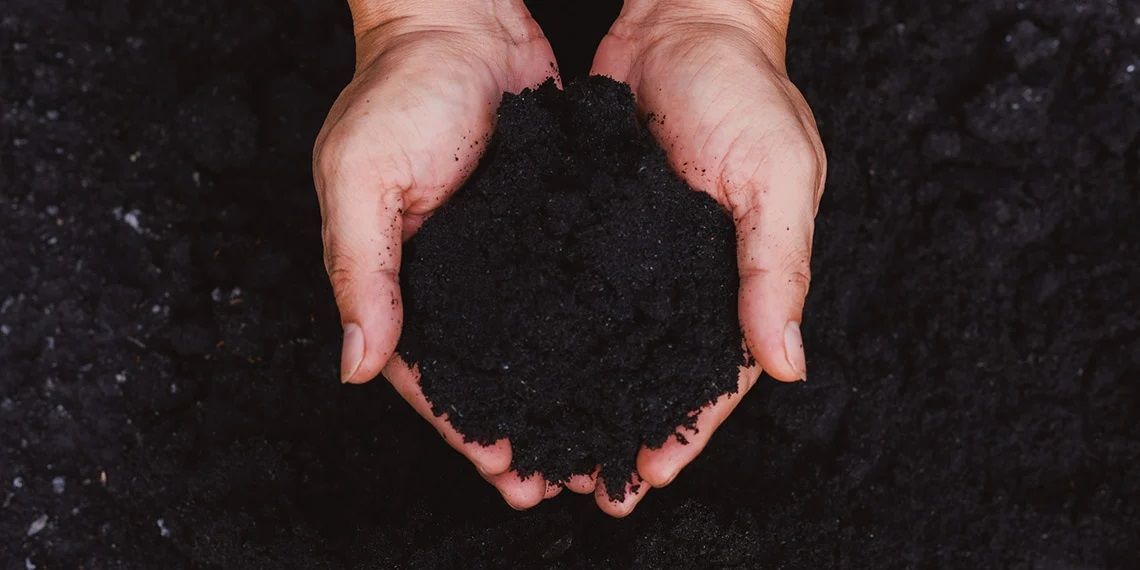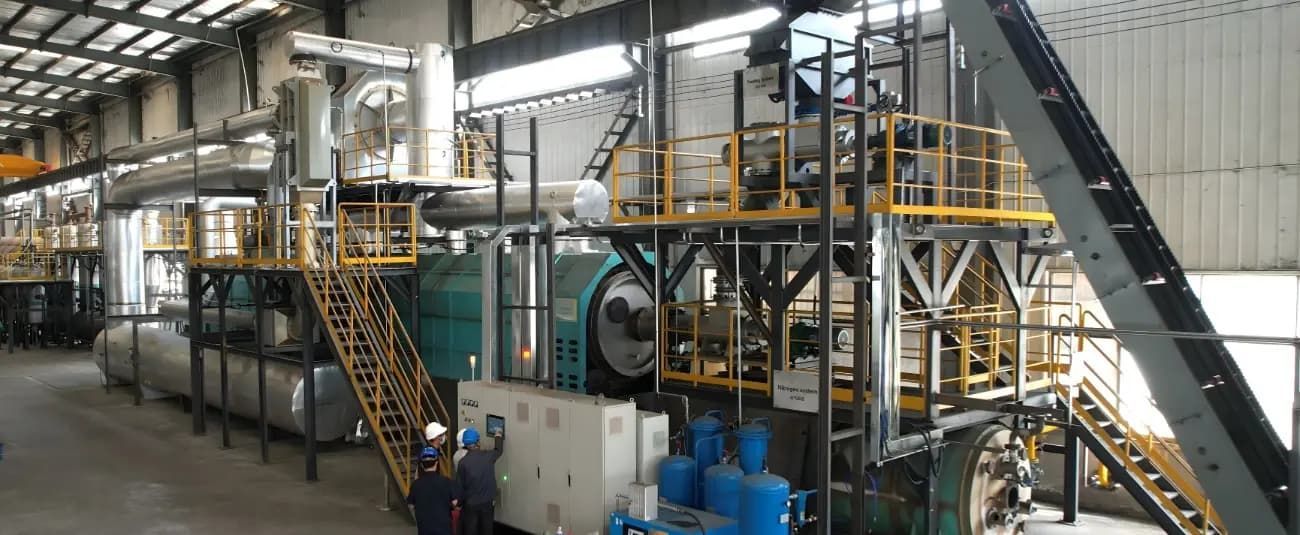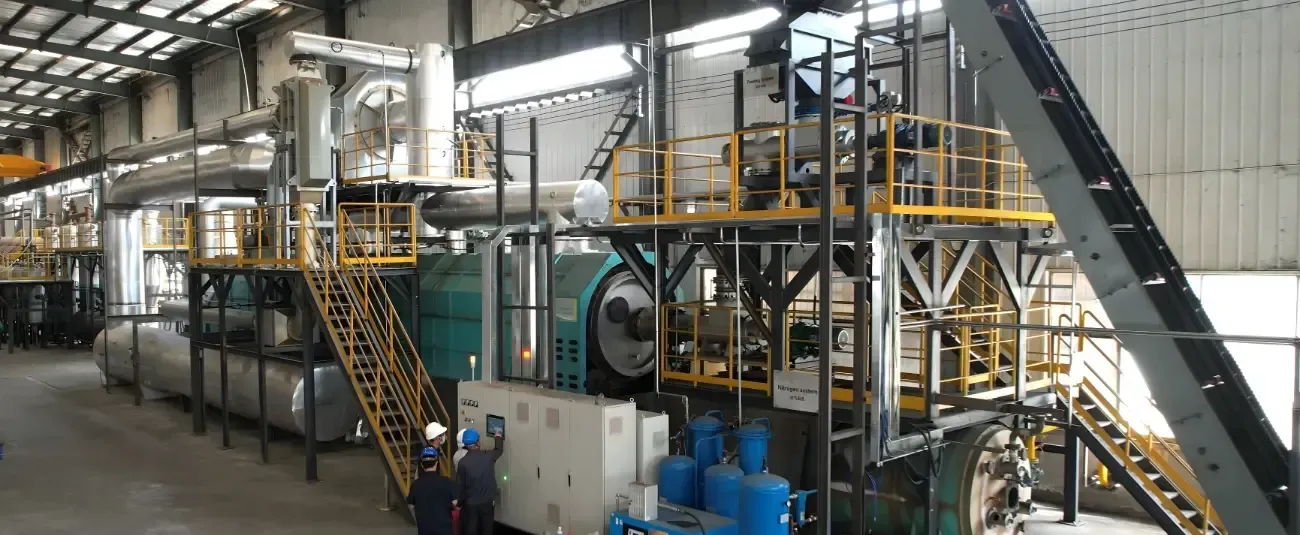What Are the Requirements for Producing EBC-Standard Biochar?
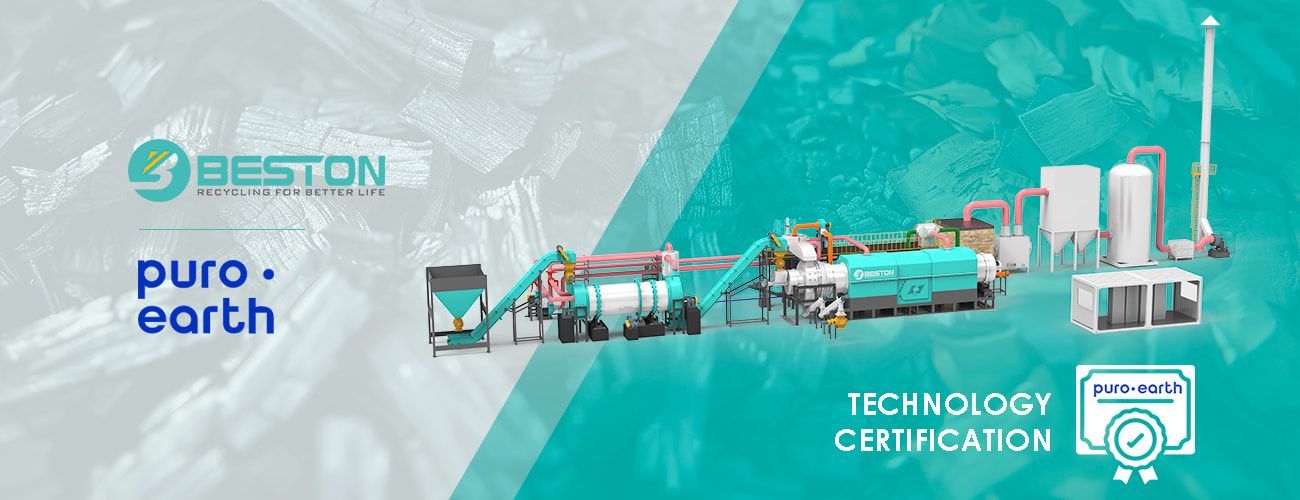
Biochar, a form of carbon-rich material produced by pyrolyzing organic waste, has gained significant attention for its environmental benefits, particularly in soil amendment, carbon sequestration, and waste management. However, not all biochar is created equal, and there are specific standards that must be met to ensure its quality, especially when aiming to meet the European Biochar Certificate (EBC) standards.
What Is the European Biochar Certificate (EBC)?
The European Biochar Certificate (EBC) is a widely recognized certification system that sets guidelines and requirements for the production of high-quality biochar. The standards ensure that biochar products are consistent, safe, and effective for various applications, such as soil improvement, water treatment, or carbon sequestration.
EBC standards cover everything from feedstock quality to the final biochar's chemical composition, physical properties, and environmental impact. For a biochar machine to produce biochar that meets these standards, strict adherence to the requirements is essential.
Key Requirements for Producing EBC-Standard Biochar
To produce biochar that complies with the EBC standards, several critical parameters must be met during the pyrolysis process. These include feedstock selection, pyrolysis conditions, and the final product's characteristics.
1. Feedstock Quality and Selection
The first step in producing high-quality biochar is choosing the right feedstock. EBC standards recommend using non-contaminated, clean, and sustainable organic materials for pyrolysis. This can include agricultural residues, forestry waste, or organic waste products. The choice of feedstock affects the final biochar's chemical composition, carbon content, and overall safety.
The EBC standards also specify that feedstock should be free from hazardous chemicals, heavy metals, and pollutants. These contaminants could end up in the final biochar, compromising its quality and safety.
2. Pyrolysis Temperature and Conditions
The pyrolysis process—where the organic material is heated in the absence of oxygen to create biochar—needs to be carefully controlled to meet EBC standards. The temperature, heating rate, and retention time all influence the characteristics of the final biochar.
For EBC-compliant biochar, the pyrolysis temperature typically ranges from 450°C to 900°C. At these temperatures, the organic material is effectively converted into stable carbon-rich biochar. The higher the pyrolysis temperature, the greater the carbon content of the biochar. However, the temperature must be balanced to avoid the formation of harmful byproducts, such as polycyclic aromatic hydrocarbons (PAHs).
Control over pyrolysis conditions such as heating rate and residence time is critical. Rapid heating or insufficient retention time can lead to under- or over-processed biochar, which may not meet the EBC standards for consistency and safety.
3. Carbon Content and Stability
One of the primary factors that determine biochar’s suitability for soil amendment and carbon sequestration is its carbon content and stability. EBC-compliant biochar should have a high carbon content, typically around 50-80%. The carbon in biochar should be stable, meaning it resists decomposition and remains in the soil for an extended period, providing long-term benefits.
The C/N ratio (carbon-to-nitrogen ratio) is also an important consideration. An optimal C/N ratio is crucial for biochar’s functionality in soil, as it influences its ability to improve soil fertility and microbial activity.
4. Chemical Composition
The chemical composition of biochar is crucial for its safety and effectiveness. The biochar produced must be free from toxic substances such as heavy metals (e.g., arsenic, lead, cadmium) and other pollutants. EBC standards require that the concentrations of these harmful substances fall below specific threshold limits.
Additionally, the pH level of the biochar is an important factor. Biochar should have a slightly alkaline pH, which is beneficial for soil amendment. The ideal pH range is typically between 7 and 10, depending on the feedstock.
5. Physical Properties
The physical properties of biochar, such as particle size, surface area, and porosity, also play a significant role in meeting EBC standards. These properties affect how biochar interacts with soil and how it retains nutrients, water, and gases.
- Surface Area: Biochar with a large surface area can adsorb more nutrients, making it more effective for soil improvement.
- Porosity: A high porosity allows biochar to retain water and nutrients, improving its functionality in soil.
- Particle Size: Smaller particles provide a greater surface area for interaction with the soil, but they may also lead to more rapid degradation. Larger particles can persist longer in soil but may not be as effective at improving soil structure.
6. Emission Control
The pyrolysis process generates various emissions, including volatile organic compounds (VOCs), carbon monoxide (CO), and particulate matter. EBC-compliant biochar machines must include effective emission control systems to minimize environmental impact. These systems often incorporate gas cleaning technologies, such as scrubbers and filters, to capture harmful emissions before they are released into the atmosphere.
Additionally, biochar machines should be designed to capture and condense valuable pyrolysis gases, which can be used as fuel or for other industrial applications, improving the overall sustainability of the process.
Conclusion
Producing biochar that meets EBC standards requires careful attention to the selection of feedstock, control of pyrolysis conditions, and the management of chemical, physical, and environmental factors. Using an advanced biochar machine designed to adhere to these standards ensures that the final product is of high quality, safe for use in agricultural or environmental applications, and provides the long-term benefits of carbon sequestration and soil improvement.
By meeting the EBC standards, biochar producers can ensure the sustainability and effectiveness of their products, contributing to a more sustainable circular economy while meeting regulatory and consumer demands.Oil sludge, a byproduct of the petroleum industry, is a challenging waste material that requires efficient disposal or treatment. One promising method for processing oil sludge is oil sludge pyrolysis, a thermal decomposition process that breaks down complex hydrocarbons into useful products like oil, gas, and solid residues. However, one crucial factor that significantly affects the efficiency and quality of the pyrolysis process is the moisture content of the raw material.
Why Does Moisture Content Matter in Oil Sludge Pyrolysis?
The moisture content in oil sludge plays a direct role in the performance of the pyrolysis process. Here are some key reasons why controlling moisture is important:
1. Energy Efficiency
Oil sludge with high moisture content requires more energy to reach the necessary temperatures for pyrolysis. The water in the sludge must first be evaporated before the pyrolysis process can proceed. This additional energy consumption leads to reduced efficiency and higher operating costs for the oil sludge pyrolysis plant.
2. Pyrolysis Efficiency and Yield
High moisture levels can hinder the breakdown of organic materials in the sludge. As the water content increases, it competes with the oil and other valuable components in the sludge for energy during the pyrolysis process. This can result in lower yields of high-value products such as pyrolytic oil and gas, making the process less cost-effective.
3. Product Quality
Excess moisture can also impact the quality of the output products. Incomplete pyrolysis, caused by excess water content, may result in lower-quality bio-oil and gas, which could be contaminated with unwanted water vapor or other impurities. This reduces the economic value of the products and complicates their downstream processing or utilization.
4. Potential for Equipment Damage
If the moisture content is too high, it could lead to complications in the pyrolysis plant’s equipment. The excessive steam could cause pressure build-up, potentially damaging reactors, condensers, or other components. Over time, this could lead to more frequent maintenance and increased downtime for the oil sludge pyrolysis plant, increasing operational costs.
What Is the Ideal Moisture Content for Oil Sludge?
While the specific moisture content requirements can vary based on the type of oil sludge and the design of the pyrolysis system, it is generally recommended that the moisture content of oil sludge be kept below 10-15% for optimal pyrolysis efficiency. Below this threshold, the pyrolysis plant can operate with better energy efficiency, higher yields, and more consistent product quality.
If the moisture content is too high, several measures can be taken:
- Pre-Drying: Sludge with high moisture content can be pre-dried using methods like rotary dryers, belt dryers, or fluidized bed dryers before being fed into the pyrolysis reactor. This ensures that only the desired material enters the pyrolysis system, optimizing the process.
- Optimizing Feedstock Handling: Effective moisture control in the handling and storage of oil sludge can prevent excess water from entering the system. This includes monitoring storage conditions and using drying techniques as needed.
- Blending with Low-Moisture Materials: In some cases, oil sludge can be mixed with drier materials to reduce the overall moisture content, making the pyrolysis process more efficient.
Conclusion
For an oil sludge pyrolysis plant to function efficiently, controlling the moisture content of the raw oil sludge is essential. Moisture levels that exceed the recommended threshold can hinder energy efficiency, decrease product yields, lower the quality of output products, and potentially damage plant equipment. By pre-drying oil sludge or blending it with other materials, these challenges can be mitigated, allowing the pyrolysis process to run smoothly and economically. Maintaining optimal moisture content is therefore a crucial step in ensuring the success of oil sludge pyrolysis operations, making it a more sustainable and cost-effective solution for waste management in the petroleum industry.
